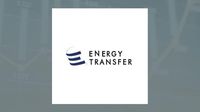Energy infrastructure giant Energy Transfer LP has found itself in the spotlight as a series of recent moves by institutional investors, a steady dividend increase, and a resilient business model have combined to keep the company front and center for market watchers. As of August 16, 2025, the company stands as a favored pick for many in the investment community, thanks to its attractive yields, robust cash flow, and the defensive nature of its midstream operations—qualities that have become increasingly prized in today’s unpredictable economic landscape, according to Seeking Alpha.
For those unfamiliar, midstream infrastructure companies like Energy Transfer operate the pipelines and storage facilities that form the backbone of the energy sector. They don’t drill for oil or gas themselves; instead, they move and store it, often under long-term contracts that help shield them from the wild swings in commodity prices. This setup has made Energy Transfer a particularly attractive investment for those seeking stability and steady income, especially in times of market turbulence.
One of the most telling signs of investor confidence—or caution—comes from the actions of major institutional holders. In the first quarter of 2025, RR Advisors LLC, a well-known player in energy investments, trimmed its stake in Energy Transfer LP by 3.7%. The firm sold 107,000 shares but still held on to a substantial 2,805,000 shares at the end of the reporting period. That holding represented a hefty 12.5% of its portfolio, with a value of approximately $52.1 million, as reported to the SEC and highlighted by MarketBeat. Even after the reduction, Energy Transfer remained the largest single position in RR Advisors LLC’s portfolio, underscoring the company’s enduring appeal.
But RR Advisors wasn’t alone in its activity. A number of other institutional investors and hedge funds have recently jumped into Energy Transfer’s stock. Capital A Wealth Management LLC, Fourth Dimension Wealth LLC, Vision Financial Markets LLC, HWG Holdings LP, and Stone House Investment Management LLC all acquired new stakes in the company during late 2024 and early 2025, with investment values ranging from $26,000 to $38,000. Altogether, institutional investors and hedge funds now own 38.22% of Energy Transfer’s outstanding shares, further demonstrating broad-based confidence in the company’s prospects.
Insider activity has also been making headlines. On June 13, 2025, Director James Richard Perry sold 1,369 shares of Energy Transfer stock at an average price of $18.48 per share, for a total value of $25,299.12. This transaction represented a 5.29% decrease in Perry’s holdings, leaving him with 24,523 shares valued at $453,185.04. Insider ownership remains at 3.28% of the company’s stock, a figure that can be seen as a sign of alignment between management and shareholders.
Turning to the company’s financial performance, Energy Transfer opened at $17.37 per share on August 15, 2025, giving it a market capitalization of $59.62 billion. The company’s price-to-earnings (P/E) ratio stands at 13.46, while its price/earnings-to-growth (PEG) ratio is 0.91, and its beta—a measure of volatility compared to the broader market—is a relatively modest 0.83. The stock’s 50-day moving average sits at $17.76, and its 200-day moving average is $18.04, reflecting a period of relative stability despite broader market headwinds. Over the past year, the stock has traded between a low of $14.60 and a high of $21.45.
On August 6, 2025, Energy Transfer reported its latest quarterly earnings. The company delivered earnings per share (EPS) of $0.32, matching consensus analyst estimates. Revenue for the quarter came in at $19.24 billion, which was down 7.2% compared to the same period in 2024. Return on equity was a solid 11.08%, and the company maintained a net margin of 5.80%. While the dip in revenue might give some investors pause, the company’s ability to meet earnings expectations and maintain healthy profitability metrics speaks to the underlying strength of its business model.
Perhaps most notable for income-focused investors is Energy Transfer’s commitment to rewarding shareholders. The company recently announced a quarterly dividend of $0.33 per share, payable on August 19, 2025, to investors of record as of August 8, 2025. This payout represents a $1.32 annualized dividend and a robust yield of 7.6%. The dividend payout ratio currently stands at 102.33%, a figure that suggests the company is returning nearly all of its earnings to shareholders. While such a high payout ratio can sometimes be a red flag, Energy Transfer’s substantial cash flow coverage and defensive contract structure offer a degree of reassurance that the dividend is sustainable for now.
Analysts have taken note of the company’s performance and prospects. Cowen and TD Cowen both initiated coverage on Energy Transfer in July 2025, each assigning a "buy" rating and, in the case of TD Cowen, a $22.00 price target. JPMorgan Chase & Co. adjusted its price target downward from $25.00 to $23.00 but maintained an "overweight" rating, signaling ongoing confidence. Mizuho raised its price target to $23.00 and gave an "outperform" rating, while Wells Fargo & Company reaffirmed its "overweight" rating and increased its price target to $23.00 from $21.00. According to MarketBeat, out of thirteen analysts covering the stock, twelve have issued a "buy" rating, with only one analyst recommending a "hold." The consensus price target is $22.75, and the average rating is "Moderate Buy."
Energy Transfer’s core business revolves around the ownership and operation of natural gas transportation pipelines and storage facilities, primarily in Texas and Oklahoma. The company manages approximately 20,090 miles of interstate natural gas pipeline and sells natural gas to a range of customers, including electric utilities, independent power plants, local distribution companies, and industrial end-users. This diversified customer base and extensive infrastructure network provide a strong foundation for recurring revenue, even when energy prices fluctuate.
Despite the positive sentiment, some caution is warranted. The company’s quarterly revenue decline and high dividend payout ratio mean that investors will want to keep a close eye on future earnings reports and cash flow statements. Still, the prevailing view among analysts and many institutional investors is that Energy Transfer’s defensive business model and steady cash flow make it well-positioned to weather economic storms.
For those seeking a blend of yield, stability, and exposure to the vital infrastructure that keeps the American energy sector running, Energy Transfer LP continues to stand out as a compelling option. The coming quarters will reveal whether the company can maintain its impressive track record and deliver on the high expectations set by both Wall Street and Main Street investors.




